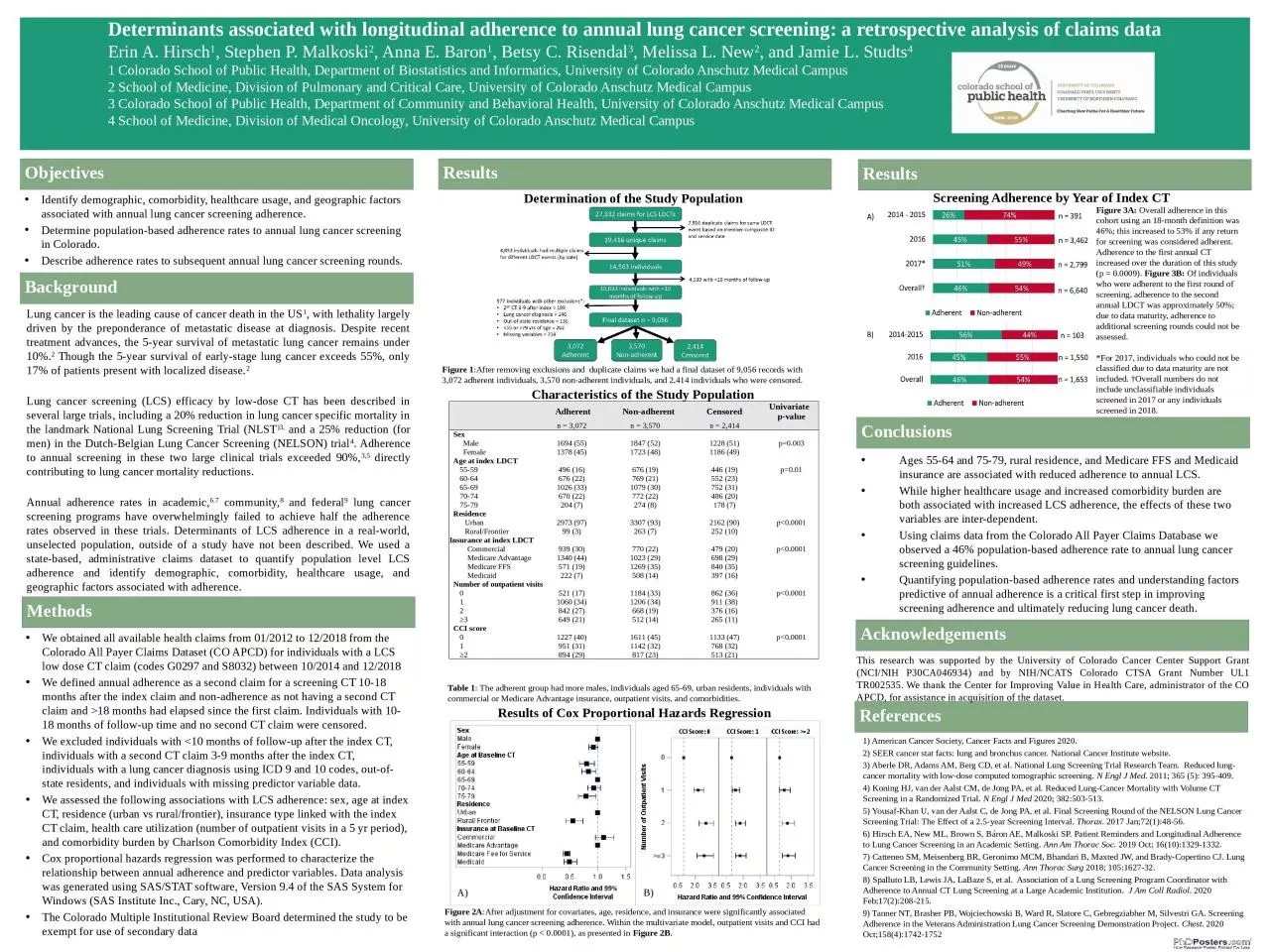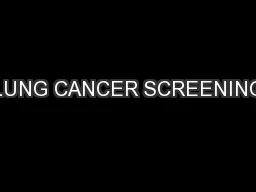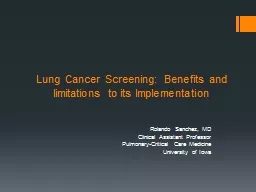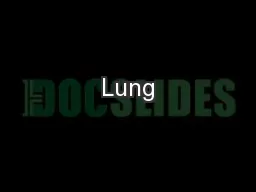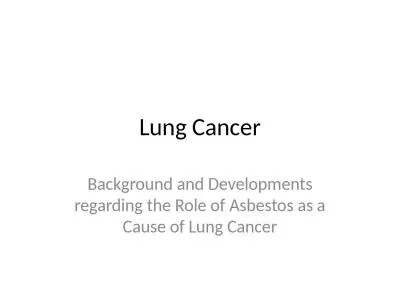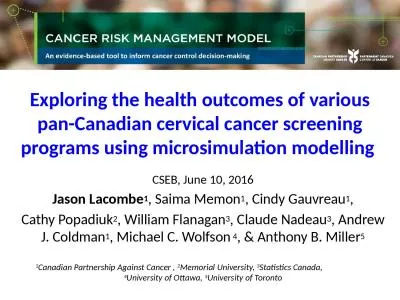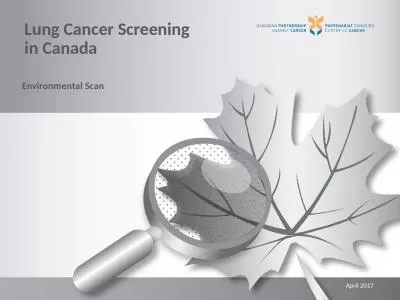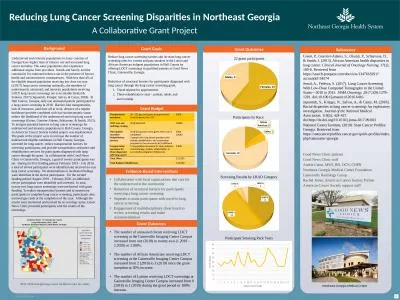PPT-Determinants associated with longitudinal adherence to annual lung cancer screening: a
Author : wang | Published Date : 2024-01-20
Erin A Hirsch 1 Stephen P Malkoski 2 Anna E Baron 1 Betsy C Risendal 3 Melissa L New 2 and Jamie L Studts 4 1 Colorado School of Public Health Department of
Presentation Embed Code
Download Presentation
Download Presentation The PPT/PDF document "Determinants associated with longitudina..." is the property of its rightful owner. Permission is granted to download and print the materials on this website for personal, non-commercial use only, and to display it on your personal computer provided you do not modify the materials and that you retain all copyright notices contained in the materials. By downloading content from our website, you accept the terms of this agreement.
Determinants associated with longitudinal adherence to annual lung cancer screening: a: Transcript
Download Rules Of Document
"Determinants associated with longitudinal adherence to annual lung cancer screening: a"The content belongs to its owner. You may download and print it for personal use, without modification, and keep all copyright notices. By downloading, you agree to these terms.
Related Documents

